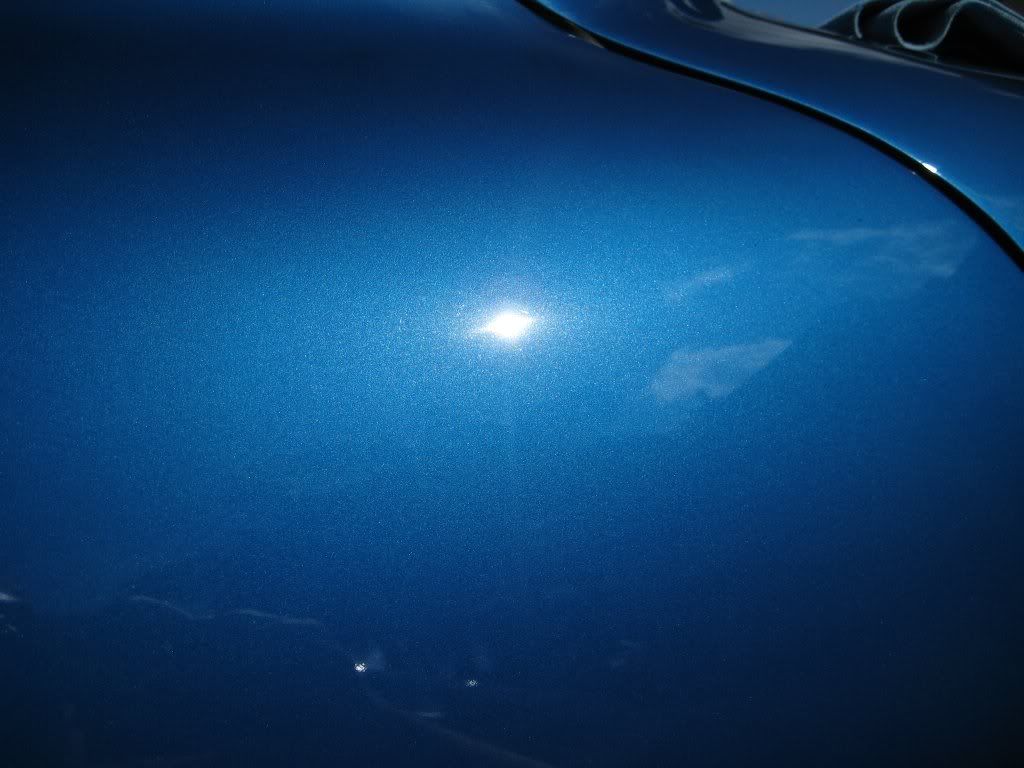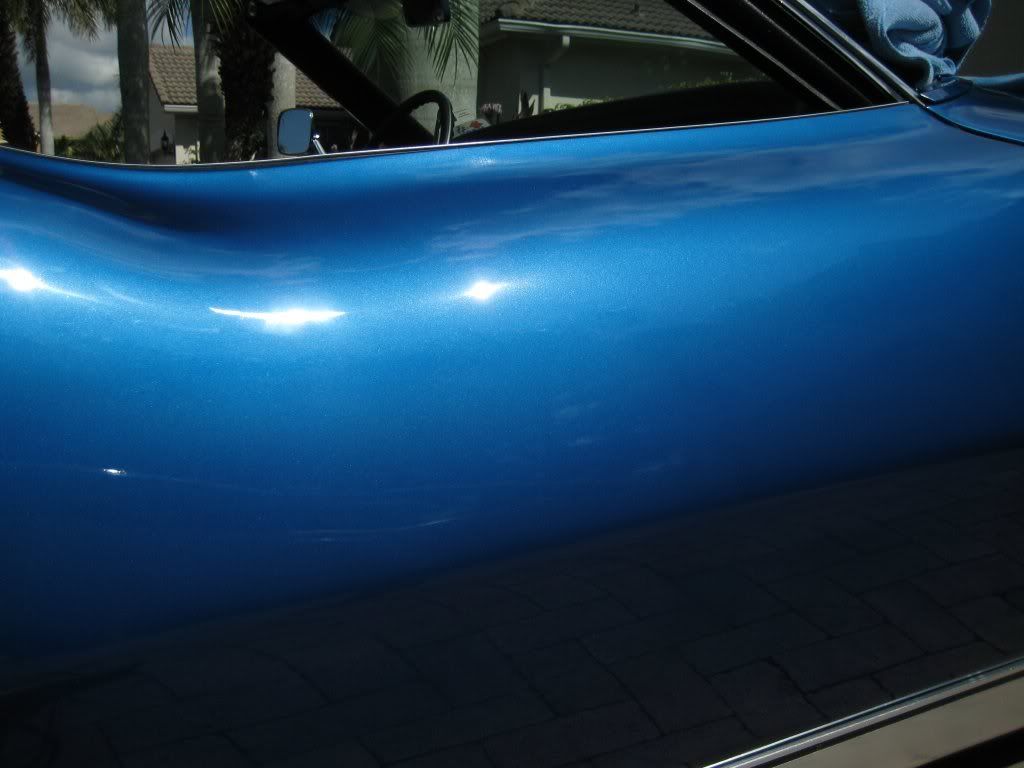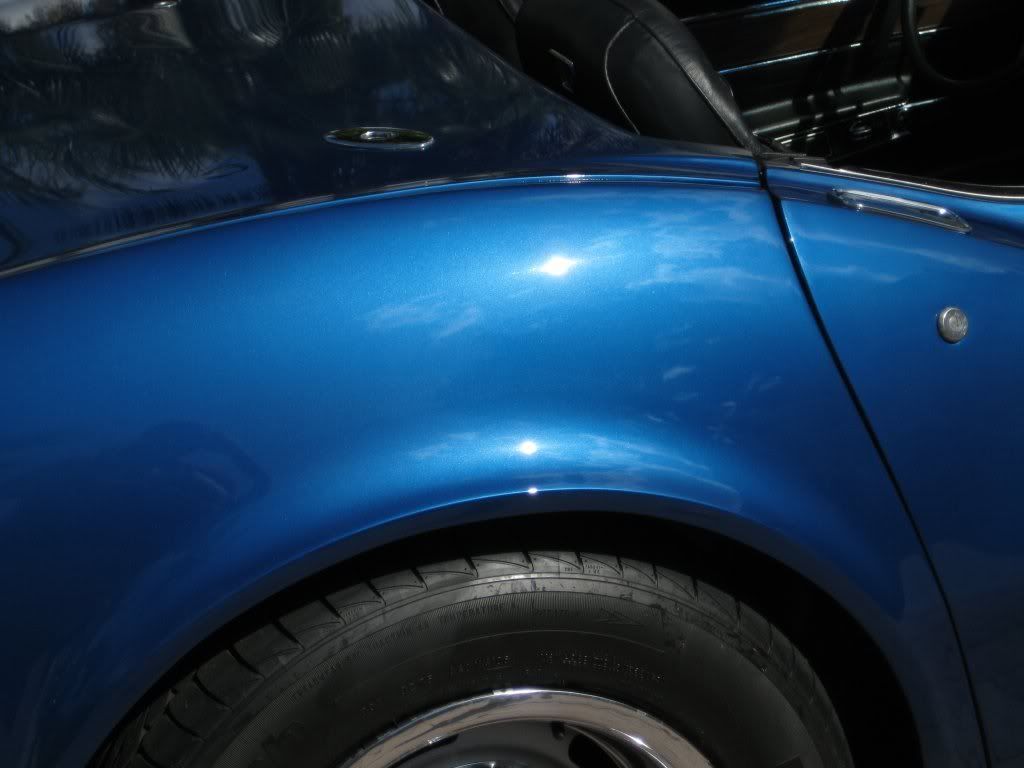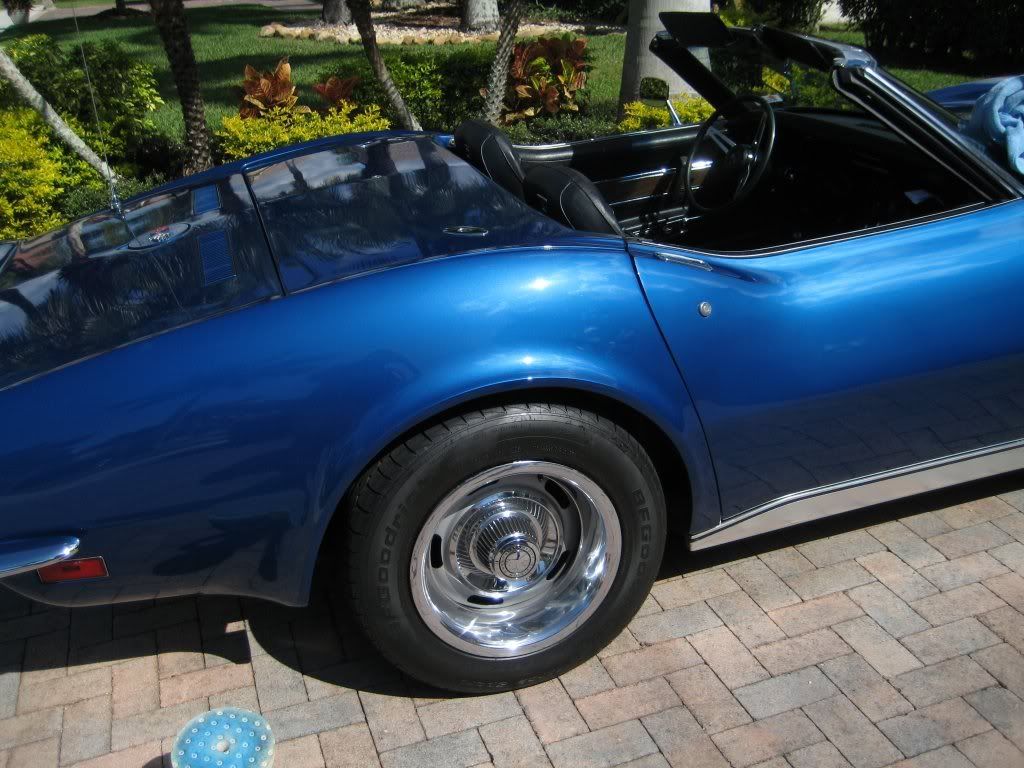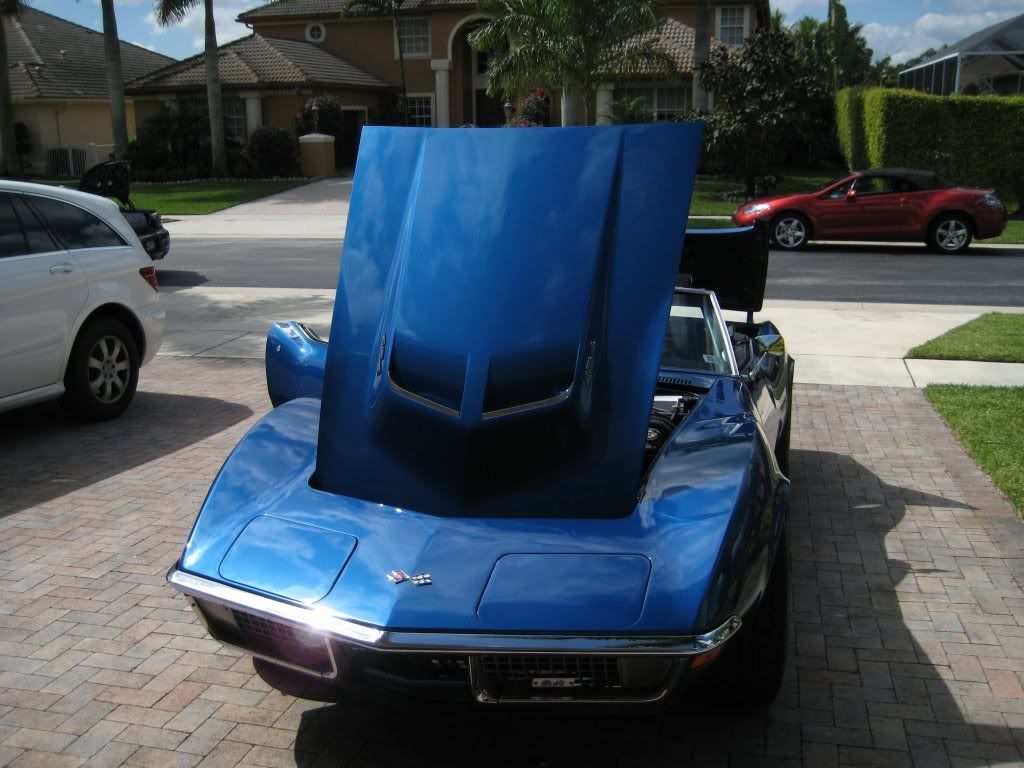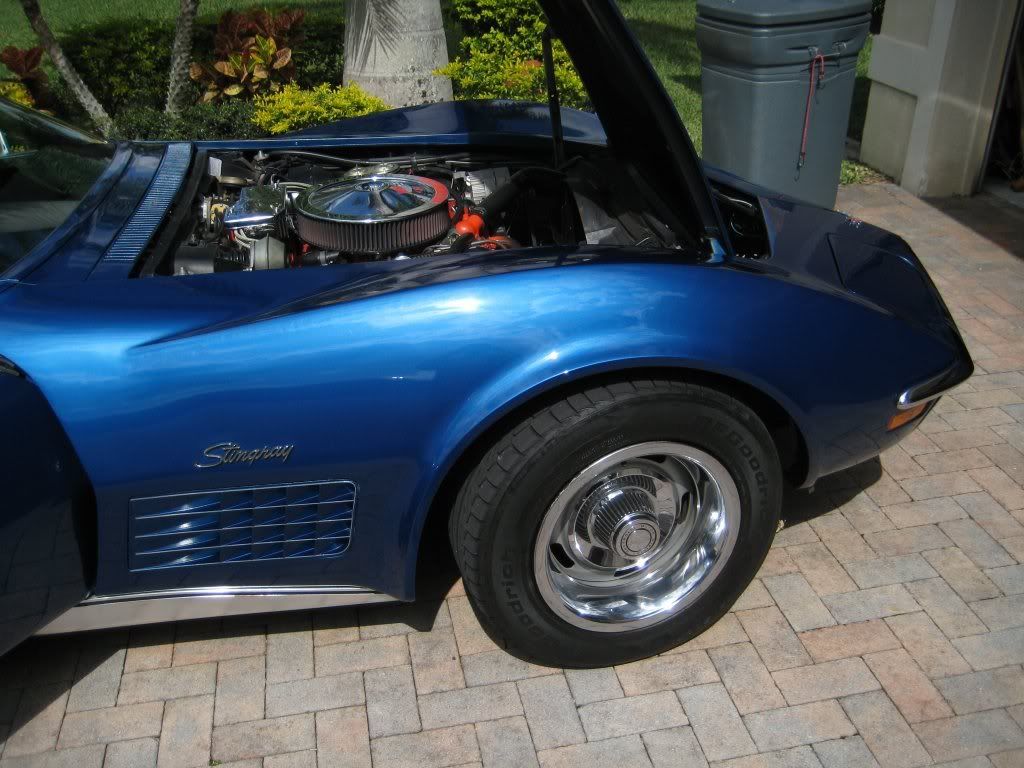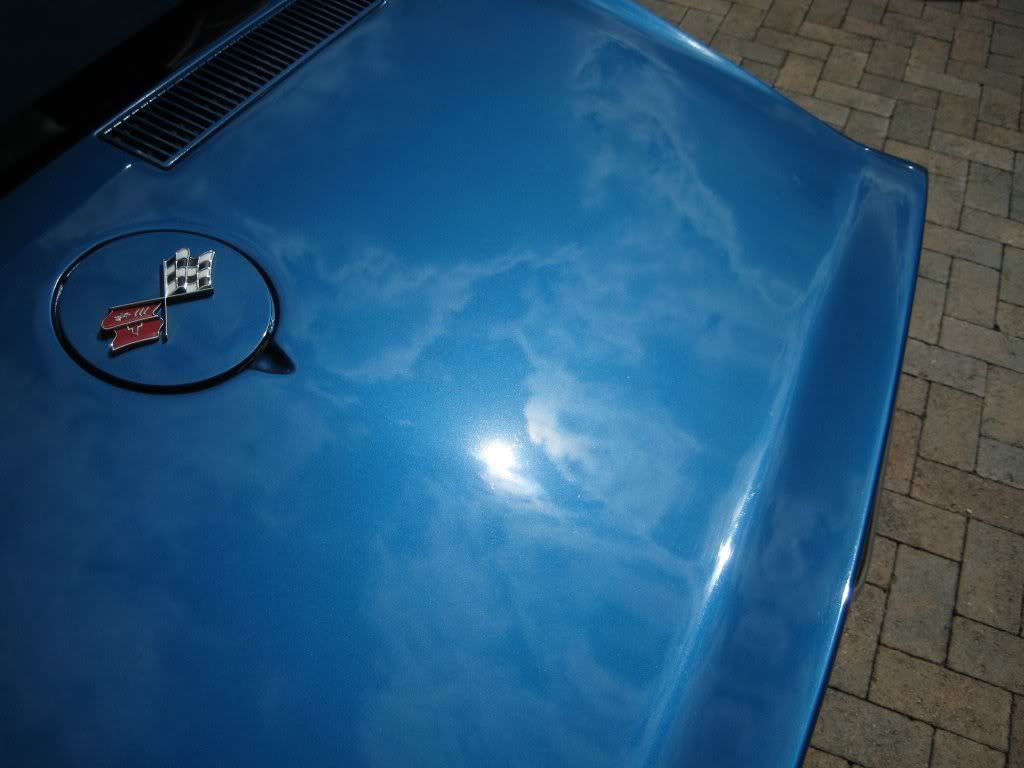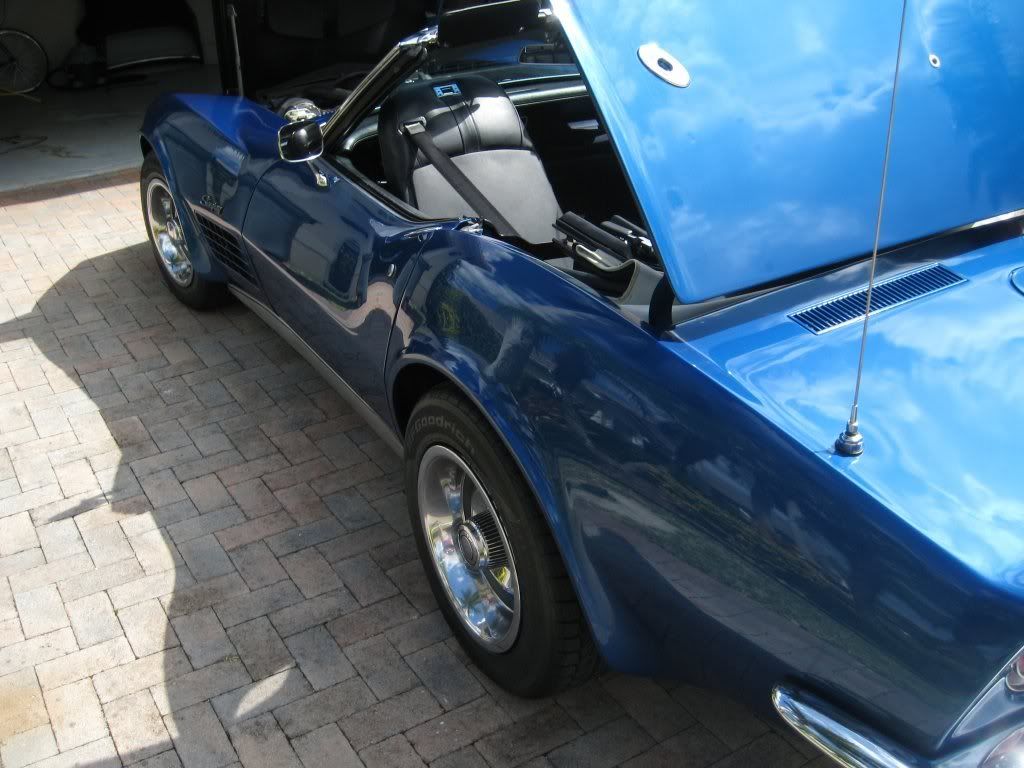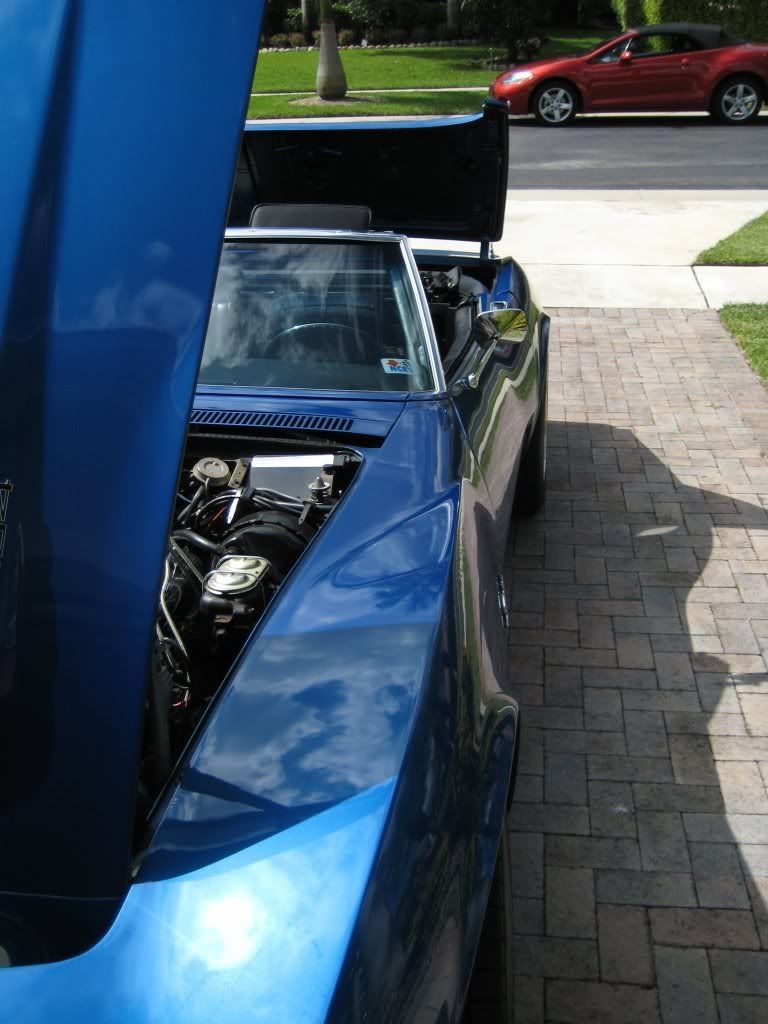imported_themightytimmah
New member
About a week ago, I got a call out of the blue asking if I could detail an older Corvette. I figured it would be easy money on a recent repaint, or maybe just a wash and wax. I was not expecting what showed up on Thursday night:
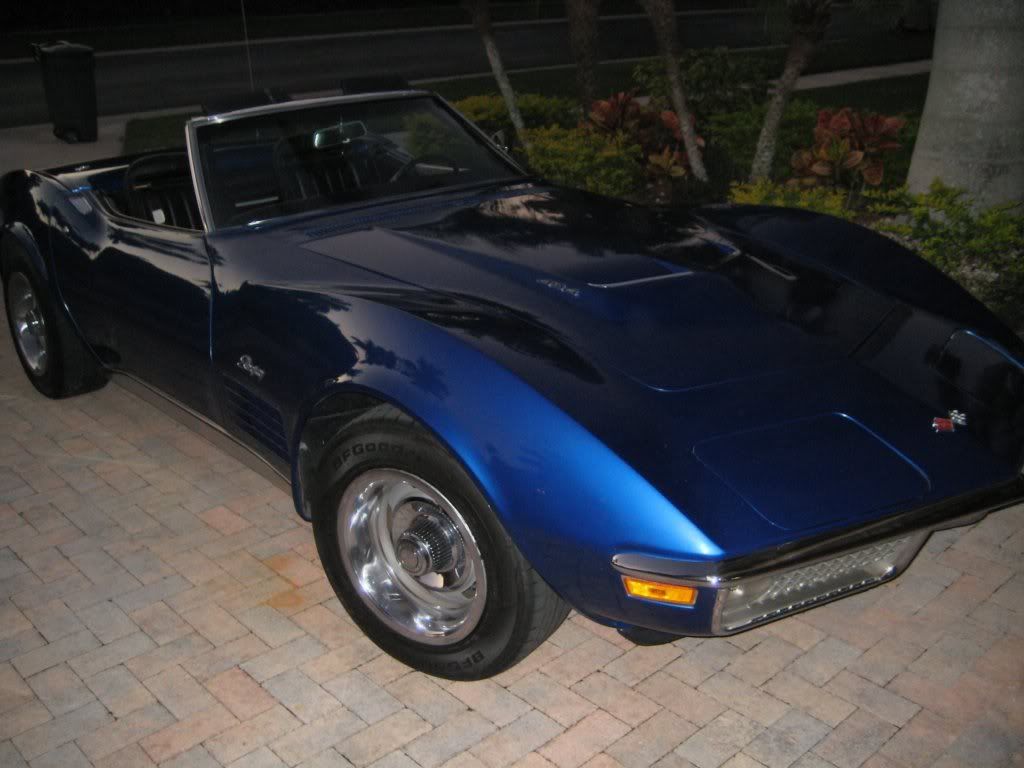
She was a 1970, numbers matching 454 Convertible, restored in 1994 by a National Corvette Restoration Society judge with a lacquer repaint dating from the mid-70's. Not only that, but the repaint was a green metallic shot over a blue basecoat, deliberately painted in with defects to match the stock paint quality. The replacement value on the paintjob was over 20k, and a repaint would diminish the value of the car (as it wouldn't be period accurate, and would cost a few points off a concours show).
The car was going up for sale Friday at 1pm, meaning that I had about 7 hours in total to correct any paint defects, polish the chrome, clean up the interior and get her ready for sale. Talk about pressure:nervous2:.
The car was a garage queen, and time was a factor, so I opted to QD with Poorboy's Spray and Wipe over a wash. I followed S+W with a pass of Griot's Clay, then wiped the panel down. This is what I found:

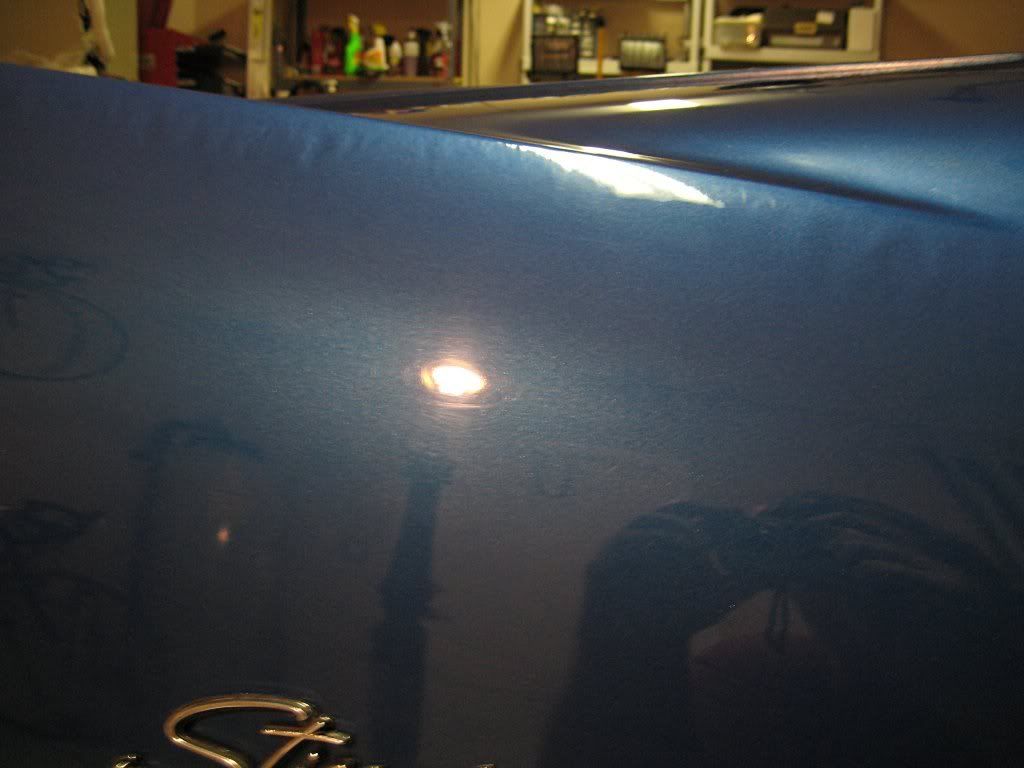
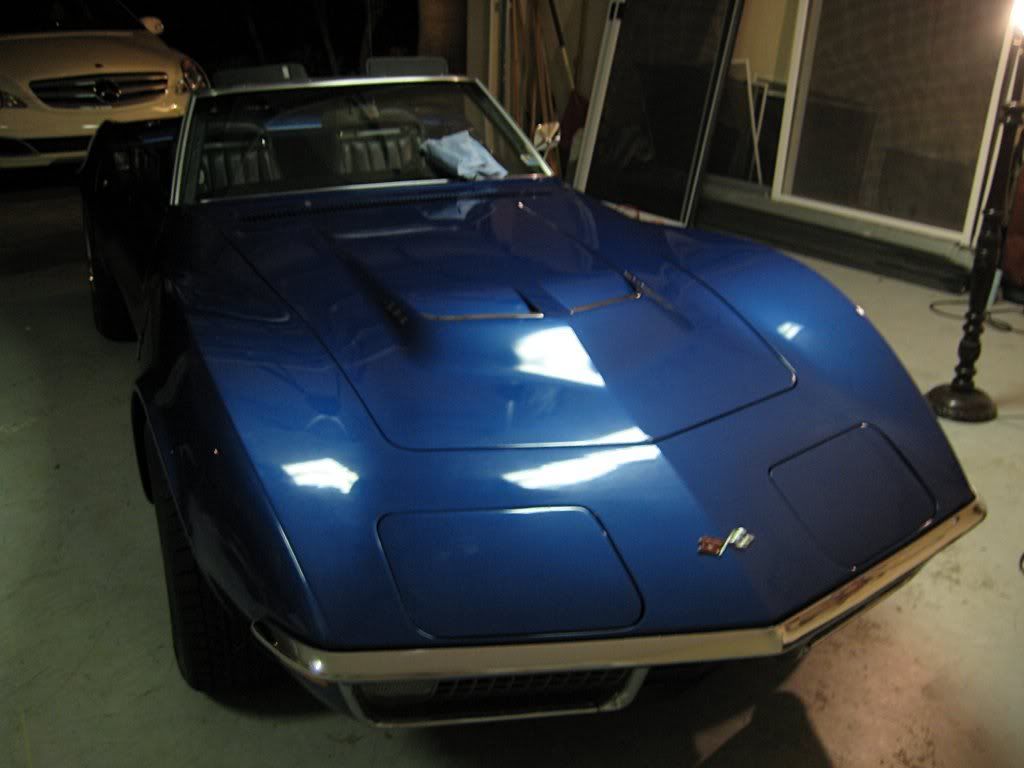
The paint featured all sorts of defects - light swirls, deep swirls, RIDS, water etching, rotary burn from a previous detailer (in two spots), poorly done touchups, etc. To add insult to injury, the halogens blew up about 5 minutes into the detail, reducing me to incandescant and flourescent lighting for swirl-spotting.
I didn't want to get too aggressive on the paint, but I also needed to do what it took to remove 90+% of the marring in less than 7 hours. My first test spot try with a Cyclo, Edge Orange, and SIP failed to remove enough of the marring in one pass. I wanted to step up to the rotary like I wanted a hole in my head, but I also didn't have the 10-15 hours that I needed to perfect things via Cyclo.
Although a wool pad would have been nice (it cuts much cooler, and fiberglass doesn't dissipate heat well), I couldn't push the RPMs high enough safely to get it to finish down. Plus, I was worried about cutting through a body line. After a couple tries with various pads, the winning combination was SIP on a LC CCS orange at 1000 RPM. I spun the pad very slowly, but also moved it across the paint slowly. Thanks to Dave KG's postings for the "slow-cut" idea. The trunk got two passes, as it was really bad.

SIP sure does dust nice :sosad
Edit: that line at the top is the edging on a towel, not a paint defect.

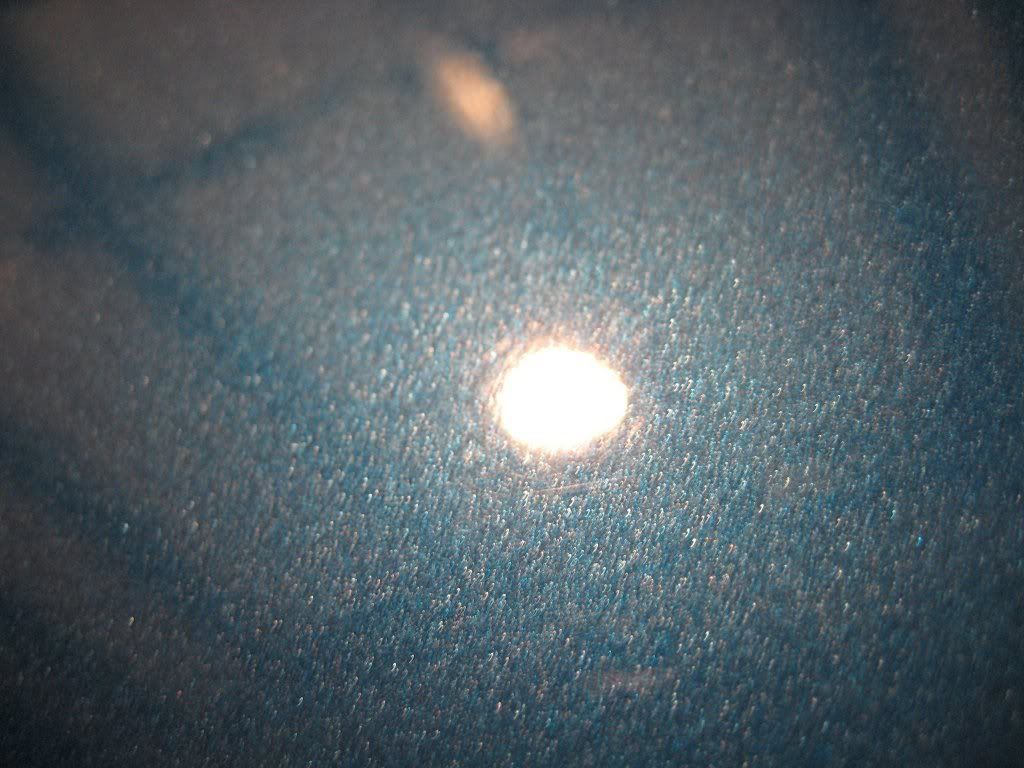
I finished up around 1130pm with the compounding step, and headed home for the night. SIP left some pretty bad micromarring on the soft lacquer (look in the bottom left of the last pic), but I was confident that Ultrafina could take it out. The next day, I took the car out in the sun and this is what I found:
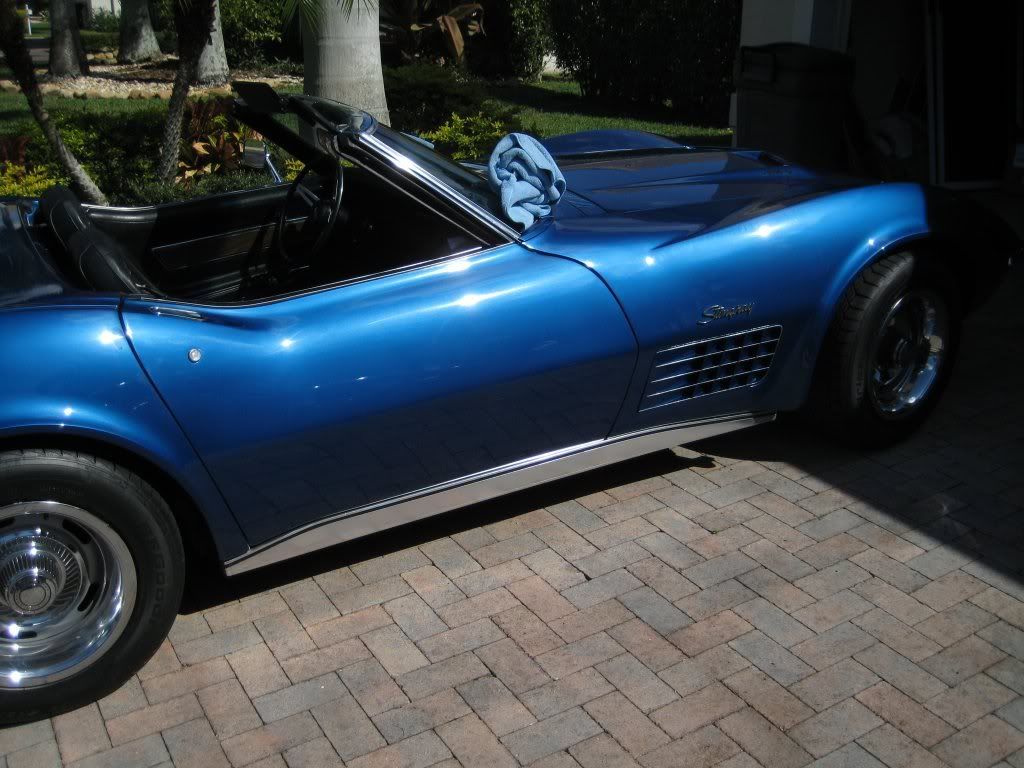
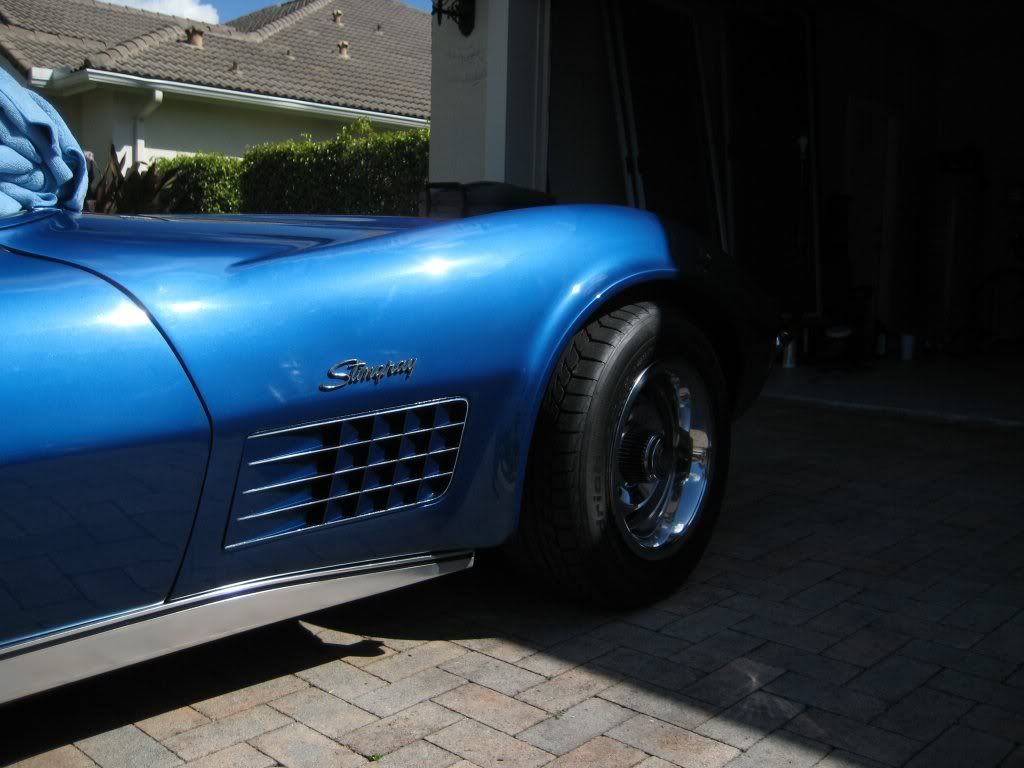

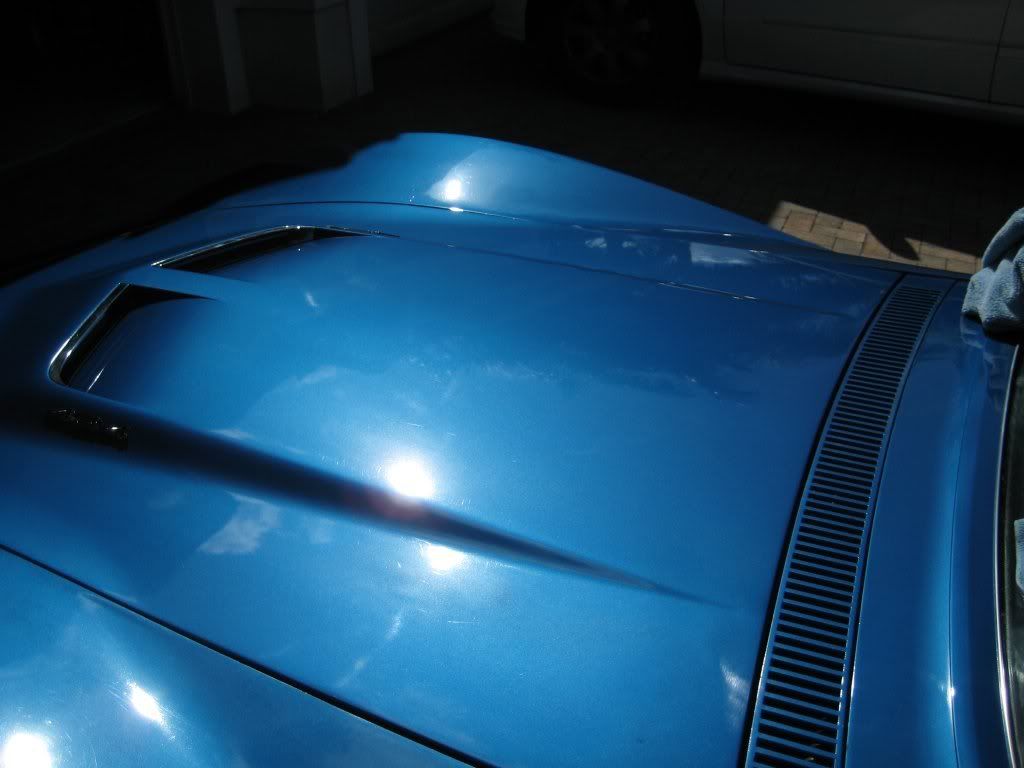
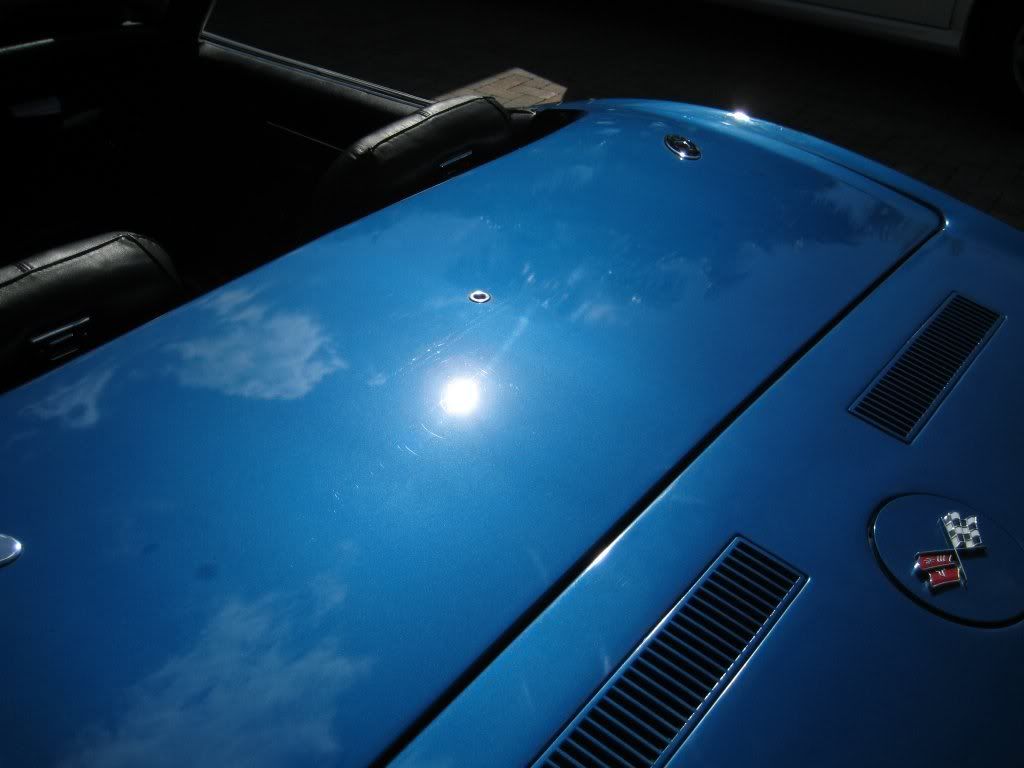
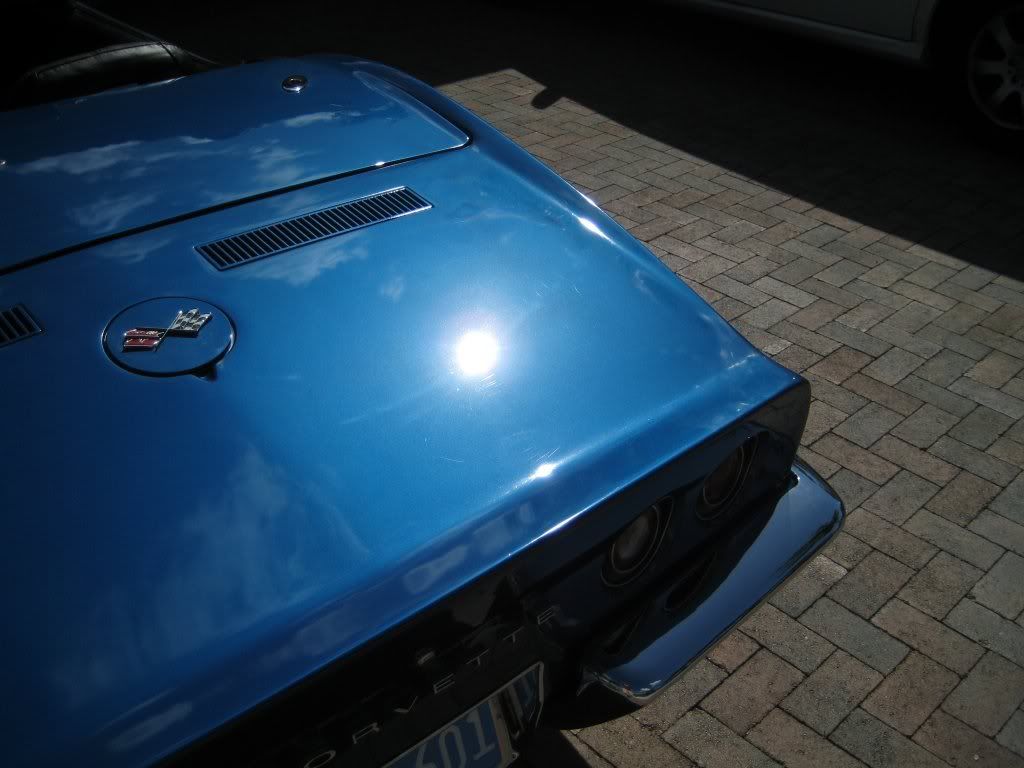
The hood and trunk got an additional pass of SIP/1200/LC white
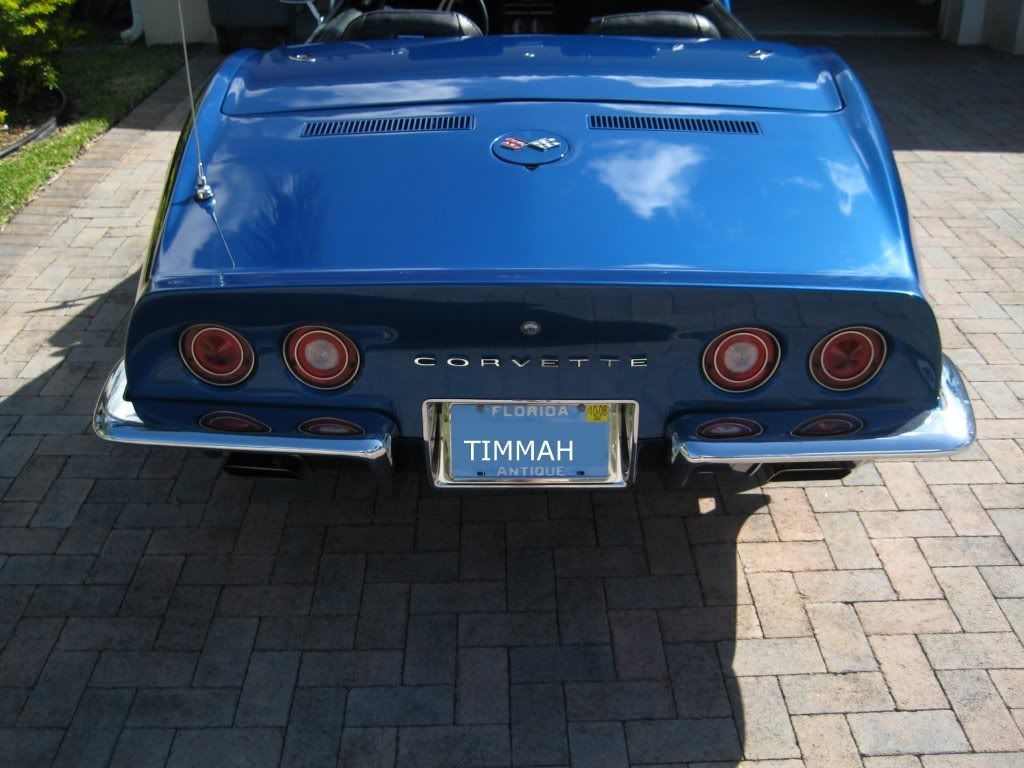

She was a 1970, numbers matching 454 Convertible, restored in 1994 by a National Corvette Restoration Society judge with a lacquer repaint dating from the mid-70's. Not only that, but the repaint was a green metallic shot over a blue basecoat, deliberately painted in with defects to match the stock paint quality. The replacement value on the paintjob was over 20k, and a repaint would diminish the value of the car (as it wouldn't be period accurate, and would cost a few points off a concours show).
The car was going up for sale Friday at 1pm, meaning that I had about 7 hours in total to correct any paint defects, polish the chrome, clean up the interior and get her ready for sale. Talk about pressure:nervous2:.
The car was a garage queen, and time was a factor, so I opted to QD with Poorboy's Spray and Wipe over a wash. I followed S+W with a pass of Griot's Clay, then wiped the panel down. This is what I found:



The paint featured all sorts of defects - light swirls, deep swirls, RIDS, water etching, rotary burn from a previous detailer (in two spots), poorly done touchups, etc. To add insult to injury, the halogens blew up about 5 minutes into the detail, reducing me to incandescant and flourescent lighting for swirl-spotting.
I didn't want to get too aggressive on the paint, but I also needed to do what it took to remove 90+% of the marring in less than 7 hours. My first test spot try with a Cyclo, Edge Orange, and SIP failed to remove enough of the marring in one pass. I wanted to step up to the rotary like I wanted a hole in my head, but I also didn't have the 10-15 hours that I needed to perfect things via Cyclo.
Although a wool pad would have been nice (it cuts much cooler, and fiberglass doesn't dissipate heat well), I couldn't push the RPMs high enough safely to get it to finish down. Plus, I was worried about cutting through a body line. After a couple tries with various pads, the winning combination was SIP on a LC CCS orange at 1000 RPM. I spun the pad very slowly, but also moved it across the paint slowly. Thanks to Dave KG's postings for the "slow-cut" idea. The trunk got two passes, as it was really bad.

SIP sure does dust nice :sosad
Edit: that line at the top is the edging on a towel, not a paint defect.


I finished up around 1130pm with the compounding step, and headed home for the night. SIP left some pretty bad micromarring on the soft lacquer (look in the bottom left of the last pic), but I was confident that Ultrafina could take it out. The next day, I took the car out in the sun and this is what I found:






The hood and trunk got an additional pass of SIP/1200/LC white



